Updating and Making a Vintage 1980’s Raleigh Super Course 555SL Bicycle Lighter
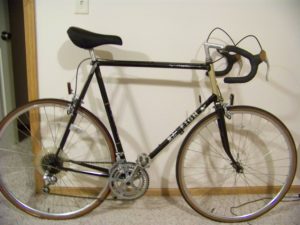
Intro:
I’m a tall dude (6’3″), and finding a vintage bicycle in my size at a decent price can be difficult. I like the look of older steel bicycles. This is obvious because I wouldn’t be collecting them if I didn’t! I like old steel bikes for a few reasons. For one; they’re more appeasing to the eyes. And secondly, they aren’t as expensive as today’s bicycles. However, when it comes to performance; todays’ bikes probably have the bikes of yester years beat with geometry, weight, and componentry. I’m not a huge cycling fanatic when it comes to racing or touring. I do bike leisurely 15-30 miles every few weeks for enjoyment. With that in mind, I’ve always wanted to update an older steel bicycle. There’s nothing I can do to compete with the geometry of today’s bikes, but I can marginally decrease the weight and improve componentry. I’m not trying to build the ultimate racing machine by any means. I’m mostly curious of the outcome. I want to know if I can build a decent bike with an older steel frame without breaking my budget. Therefore, I want to do this economically if I can. If I were interested in building a great riding machine, this definitely in my opinion wouldn’t be the right way of doing it. I would be better off buying a brand new bicycle. However, again, that is not why I’m doing it. I want a semi light weight, responsive bike I can enjoy biking the trails while looking good at the same time.
1980’s Raleigh Super Course with 555SL Double Butted Tubing
I basically got this Raleigh for free. I think I paid $25 for it. What made me interested in this particular bike was the fact it looked like it had decent light weight steel tubing. It looked awesome. It was my size. And lastly, it was cheap! I’m not knowledgeable on the Raleigh 555SL tubing. I did some research and well there was no direct answer to my question. I read one story story saying it was heavy, crappy Huffy steel. Another story was it was rebadged Reynolds 505 tubing. What I do know is that the bike and the components do not look cheap. The bike was equipped with Sun Tour arx, and dia-compe components. These are not the best obviously, but they aren’t the worst either. I’m a big fan of the old Sun Tour drive train components. They work extremely well compared to the best. And the ARX I believe was somewhere near the top just underneath sun tour’s SuperBe. So my thinking is the frame must be decent as well.
Is Raleigh 555SL Any Good?
Before I start this project, I have to find out if this frame is worthy of being updated. Is this Raleigh Super Course 555SL frame worth the updates? Like I stated above, I’m not a small dude. I’m 6’3 and 205lbs. I need a steel frame that is light but also durable enough to hold my weight and structure. This particular frame is got double butted main tubes. This is good because it tells me it’s not going to be super heavy compared to other bikes of its 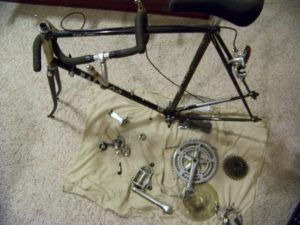 day. It’s also not too light that it’s going to snap in half when I’m on the trails. Before I start investing in this frame I need to find out how much it weighs. My goal is to have a bike that weighs in less than 23 pounds. I figure that would be a good goal considering a lot of the newer aluminum bikes in the $500 range weigh about that much. From the start it weighs 26.30 pounds. So to get started, I decided to break down the bike and start weighing every single component. More importantly, I wanted the weight of the frame, fork, and wheelset.
day. It’s also not too light that it’s going to snap in half when I’m on the trails. Before I start investing in this frame I need to find out how much it weighs. My goal is to have a bike that weighs in less than 23 pounds. I figure that would be a good goal considering a lot of the newer aluminum bikes in the $500 range weigh about that much. From the start it weighs 26.30 pounds. So to get started, I decided to break down the bike and start weighing every single component. More importantly, I wanted the weight of the frame, fork, and wheelset.
From my evaluation, Raleigh 555SL could be rebranded Tange 3 tubing? Look, I’m not an expert, but when I stripped the frame I came across a particular marking on the steer tube on the fork. On the steer tube it is labeled Tange 3A. I don’t know what the “A” represents but I do know Tange 3 is the equivalent to Reynolds 531 double butted tubing. If the fork is Tange, then maybe the frame is as well. Although Reynolds 531 is more collectible, it has been debated that Tange is equally or maybe even better than Reynolds. Obviously it’s pure personal preference. I do know through research, that Tange 3 and Reynolds 531 double butted frames are very similar in weight. In essence, that’s all I really care about. Below you can see on the fork steer tube where it says “Tange 3a”.
Weights of the Raleigh Super Course and its components.
26.30lbs=The Raleigh Super Course with the 555SL and all of its original components.
1695g=Front wheel with tire and skewer.
1586g=Front wheel with tire and NO skewer.
31g=Rim Tape
99g=Front tube
438g=Front tire
50g=Front deflector
1058g=Naked(No tire, tube, tape) front wheel with skewer.
2341g=Rear wheel with tire and skewer
2233g=Rear wheel with tire without skewer
31g=Rim tape
81g=Rear Tube
470g=Rear Tire
50g=Rear deflector
538g=6 speed freewheel
1157g=Naked(no tire, tube, tape) rear wheel with skewer
2215g=Wheelset…..this includes rims, spokes, hubs, and skewers. NO tire, NO tubes, No rim tape, NO freewheel.
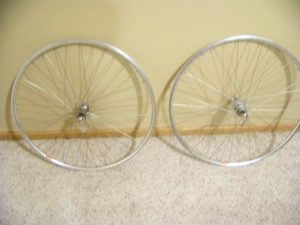
420g=Seat
289g=Seat Stem
920g=Fork with crown.
90g=Front Suntour ARX Derailleur.
243g=Rear Suntour ARX Derailleur.
90g=Front brake deflector with deflector bracket.
90g=Rear brake deflector with deflector bracket.
2373g=Bare Frame with no fork
360g=bottom bracket
497=crank arm with chain ring
203g=left crank arm
164g=headset
65g=downtube shfiters
346g=chain
Stem=320g
Road Bars=345g
Brake Lever=94g
Crank, Bottom Bracket, and Headset
I replaced the old bottom bracket with a new sealed shimano un55 bb. The axle on the old one was worn and needed to be replaced. Although it’s still a square taper, it’s less expensive and only cost me $15. The weight of the new sealed bb is 356g so I’m not saving any weight here.
I kept the old crank to keep costs down. The crank is still very functional and has a lot of life left. I did clean it up a bit though.
The fork for the Raleigh looked a little bent and was heavy. Therefore, I decided to go with a $100 carbon fork from Nashbar. I ordered and installed a Origin 8, 1 inch threadless headset. The old headset weighed 164g. The new threadless Origin 8 headset weighs in at 136g. This included the compression plug and star nut. So there is some weight savings here. I’m hoping the weight savings with the carbon fork and threadless headset will be around 600-700g. The old headset I removed with a homemade headset cup removal tool. I bought a 3/4 inch electrical conduit pipe from the hardware store. It cost me 2 or 3 dollars. I used a steel cutter to make the cuts. A person could use a steel saw also. This was super easy to make, and saved me probably $15. To install the new Origin 8 cups, I made my own headset press with some threaded rod and thick steel washers.
8 Speed Cassette, Chain, Indexed Down-tube Shifters, Rear Derailleur.
I went with a shimano 8 speed cassette and 8 speed shimano hyperglide chain. I never had to install a shimano chain before. I guess the new chains I’ve always dealt with had the easy link which made it simple. Shimano uses a rivet pin which you have to break off. I have a nice Park tool chain breaker so this wasn’t a problem. The chain installation was super easy. The weight of the new hyperglide chain is 305g and the old was 346g. I saved some weight there which makes sense cause the shimano is a narrower chain. The chain was about $20.
The cassette was also a lot lighter. The 12-25t cassette weighs 303g vs 538g for the old 6 speed freewheel. I’m going with some old tubular mavic rims from the 80’s/90’s. The hubs that they attached to are practically brand new shimano dura ace hubs. The hubs are super quiet and smooth. I’ve never felt a smoother hub. I got them for cheap a long time ago and so I figured I’d use them. The hub is compatible for both uniglide and hyperglide. In other words it’s threaded outside at the end for older uniglide cassettes, and it’s also threaded on the inside for the now used hyperglide. Apparently these hub bodies were only made for a few years. I’m not sure a person can buy a uniglide hub body brand new anymore. This tubular rear wheel with my new cassette and skewer weighs 1379. Without skewer and cassette weighs 976g. The older wheel with the old freewheel and skewer weighed 1695g. The old wheel without the skewer and cassette weighed 1049g. Looking at this information, I’m saving a over 300g going with my tubular rim with the shimano hyperglide cassette and dura ace hubs. It’s not that the old rim weighed so much, only 100g more, it’s that the freewheel weighs more. A cassette and cassette hub body weigh substantially less. Later, I’ll purchase new tubular tires and that will save some additional weight. The cassette was about $20
The new indexed downtube shifters are awesome! They work very well with my new chain and cassette! I love em! The only bad thing is they were hard to find so I think I paid about $35 for them. The rear is indexed and the front is friction which is what I prefer. My new shifters weigh 75g and the old shifters weighed 65g,
There’s not a lot of options for 8 speed rear derailleurs out there. The only one I could find was a low end Shimano 8 speed Claris rear derailleur. It works fine and I have no complaints on it. It works well with the new chain, cassette and downtube shifters. The new Claris derailleur weighs 258g and the old suntour arx weighs 243g. Looking back at it now I kind of wish I would of went with a 9 speed shimano derailleur because there’s a lot more options. I just didn’t think a 9 speed shimano derailleur would work with a 8 speed cassette and 8 speed shifters but after doing some research it sounds like it could? From my understanding, most of the time an 8 speed shimano cassette must be paired with a 8 speed shimano shifter cause it’s the shifter that determines determines the required pull of cable to make the required shift, not the deraileur. However, a shimano mountain bike deraileur and road bike deraileur are quite different in functionality. Therefore, it’s recommended to use a shimano road derailleur on a road bike and not on a shimano mountain bike gearing system and vice versa. At any rate, Sheldon Brown talks about here. The new Shimano Claris derailleur was $30.
Nashbar Carbon Fork, Stem and Origin8 Headset Issue
So I finally got my Carbon Fork from Nashbar! I didn’t cut it down at all. In actuality, being I have a large frame, cutting down the steer tube wasn’t necessary. Which is unfortunate because I was expecting to lose some more grams. No worries though, it still looks awesome and it’s still a lot lighter than the original steel fork I had. The Nashbar carbon fork weighed in at 594g. The old fork was 920g. I did run into a few issues though.
The first issue I had was setting the crown race. When I bought the Origin8 headset, it came with two sized crown races, which was nice. However, the correct sized crown race that was issued was pretty tight on the tapered fork crown. I tried pounding it in with a chunk of pvc pipe but that got me nowhere. I gave up and took into Erik’s Bike Shop and they set it for $7. The mechanic, said it was a tight fit and that I’ll have a tough time getting it off if I ever had to. That don’t matter to me though, I’ll probably never have to remove it.
The second issue I had was when I was installing the new carbon fork into the new Origin8 headset. I set it up exactly how the instructions stated, but I was not getting a “good” feel when tightening the star nut. There was no happy median. The headset was either too tight or too loose. The headset bearings were binding in the front but when turning the fork it was loose. I thought maybe the star nut was crooked. That wasn’t the problem. I bypassed the star nut and clamped the stack down with the stem. It was doing the same thing. So I knew it wasn’t the star nut. The bolt cap had more than enough clearance, and I tried different spacing so I knew it wasn’t the distance between the cap and the steer tube. The only other thing I could think of was maybe the cups or fork race were installed crooked. I decided to press the headset cups again, thinking one of them wasn’t flush. Well, that was the problem. You can kinda of see in the picture above.(grease getting squeezed out of the bottom cup) The bottom headset cup just needed to go in a little more. It wasn’t flush. When I re-tightened it, some grease spewed out. So that’s all it was. I didn’t install the bottom cup tight enough. That little tiny difference caused the headset to bind. It’s perfectly smooth now, and works wonderfully!
So with everything, the old headset weighed 164g, the old quill stem weighed 320g and the old steel fork weighed 920g. That’s 1404 grams total for the old. The new stem weighed in at 155g. Carbon fork was 594g. The new headset was 136g. That’s a total of 885g for the new components. That’s a difference of 519g. I was hoping for a loss of 700g but oh well….519g still makes me happy.
Wheels and Everything Else!!
I decided to go with Tufo S33 tubulars. They’re cheap, and the reviews say they are durable. Being this is my first time gluing tubulars, I didn’t want to screw up using expensive tires. Tubulars were definitley a learning curve for me. It wasn’t messy for me but a pain in the butt to mount. I learned that pre-stretching the tyre was extremely important. I’m guessing next time it will be a lot easier. The Tufo tubulars weighed in at 310 grams a piece.
The old front wheel with tire and skewer etc. weighed in at 1695 grams. The new Tufo tubular wheel with skewer weighs 1229 grams. That’s a savings off 466 grams on the front wheel. The old rear wheel with tire and skewer etc. weighed in at 2341g. The new Tufo tubular wheel with skewer weighs 1689g. That’s a decrease of 652g on the back. So going to a tubular wheelset decreased the weight by 1118grams or 2.5 pounds.
I saved some weight with a new saddle as well. The old saddle didn’t look that great and weighed 420g. I bought a new Selle Italia saddle for 30 dollars that weighed 290g. I saved 130g.
I kept the old dia-compe brake levers. I thought about going with some aero levers but I decided not to. I figured there was no weight savings here. Besides, the old dia-compe’s still look good after a little polish and some new hoods.
Summary
In the end, my Raleigh SuperCourse weighed in just below 22 pounds. The scale read 21.95 pounds. That’s a substantial difference from the original 26.3 pounds. Here’s the summary below.
I ditched the following items:
(2) reflectors @ 50g=(100)g
(2) brake reflector brackets @ 90g=(180)g
Components replaced:
Old chain 346g with new HG 8 speed chain 305g= (41)g
Bottom Bracket 360g with with new Shimano UN55 356g=(4)g
Friction Shifters 65g with new Shimano Indexed Shifters 75g=10g
Suntour Rear Deraileur 243g with new Shimano Claris 258g=15g
Old headset with quil stem 484g with new Origin8 headset and stem 291g=(193)g
Old Steel Fork 920g with new Nashbar Carbon Fork 594g= (326)g
Old saddle 420g with new Selle saddle 290g= (130)g
Old front wheel with skewer, tires 1695g with used front tubular wheel with tire and skewer 1229g= (466)g
Old rear wheel with freewheel, tire, and skewer 2341g with used tubular rear wheel with new tubular tire, new HG Cassette and skewer 1689g=(652)g
The total difference from above component replacements equals a reduction in 2067g or 4.56 pounds.
The starting weight of the bike 26.3 pounds minus the 4.56 pounds in reduction= 21.74 pounds
Again when I weighed my finished bike it read 21.95 pounds. Going by the above calculations I got 21.74 pounds. I’m pretty happy with this cause it’s only a .21 pound difference. There are a few variables that could determine the difference in final bicycle weights. I added new rubber hoods, cables, housing, and bar tape. There is also some marginal error in calculating all the weights of components. The biggest probably being the scales used. Not all scales are precisely accurate.
Update: 7/24/2019
So far I’ve put on about 1,000 miles on this sweet Raleigh of mine and everything is working great! The ride is a little stiffer than the other steel bikes I own but I kind of like it that way. I haven’t had any issues with the shifting at all. Actually, the drive train got quieter a few hundred miles into riding it. I suppose, the chain breaking in with everything has something to do with it? I want to change the brake calipers, cause they suck. They have no stopping power. I’m possibly thinking about installing newer brake calipers, however, I’d have to drill some holes to to accommodate the newer recessed bolts. I did have a slow leak in my tofu tubular tires. I put in half a bottle of Stan’s tire sealant and I haven’t an issue since! Great stuff! The removable valve stem on the tofu tubular was easy enough.
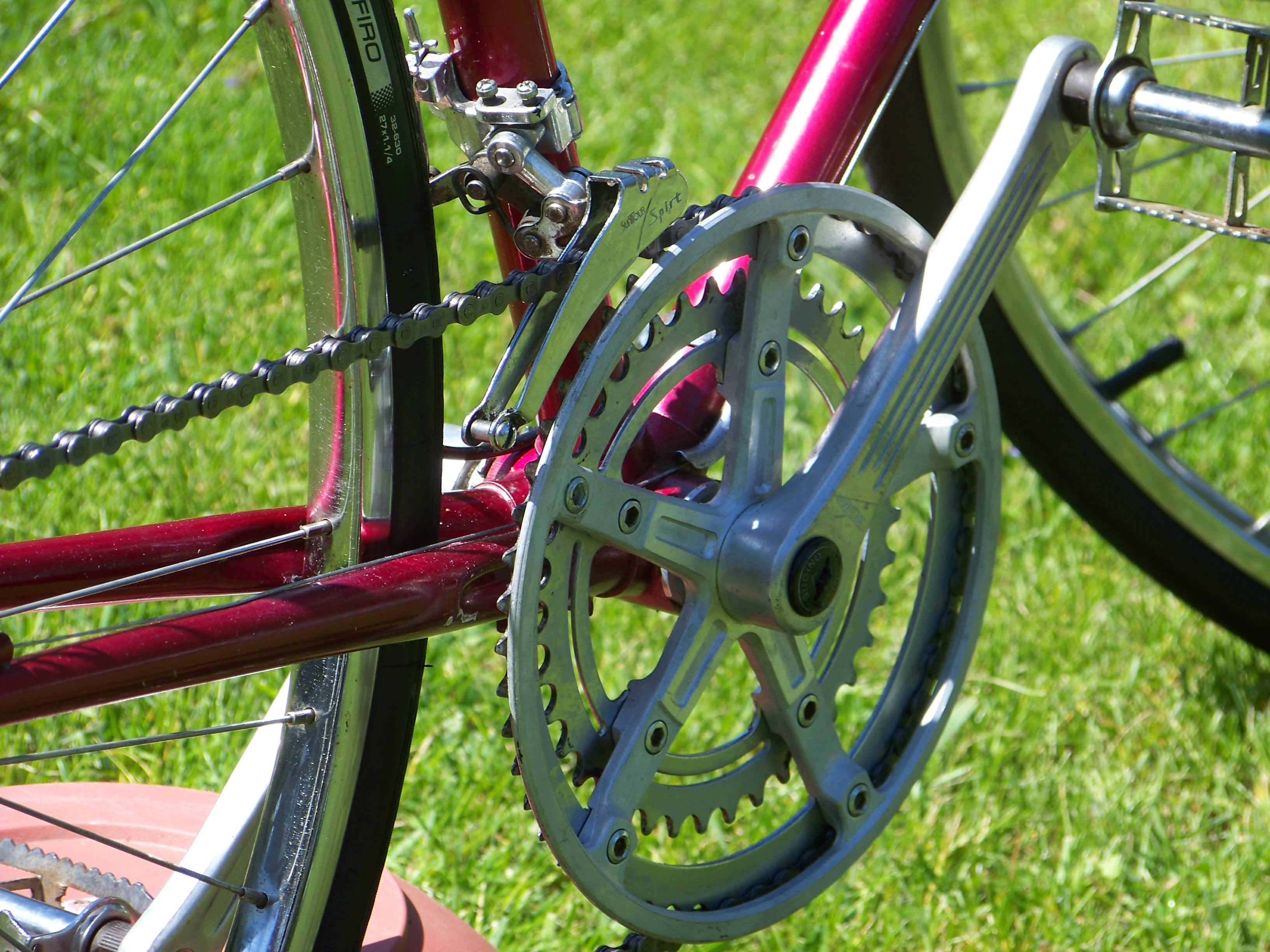
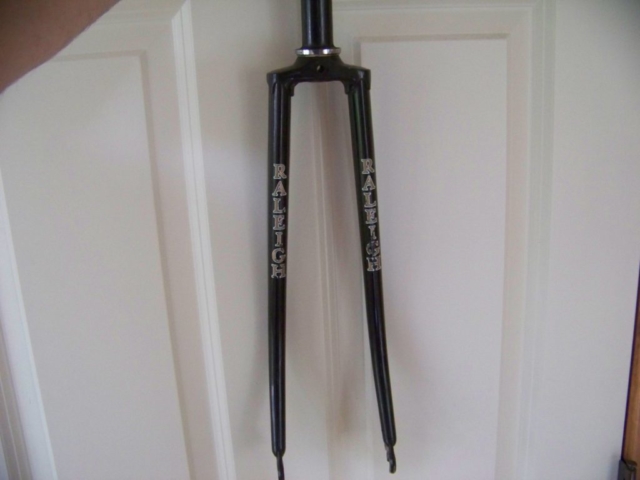
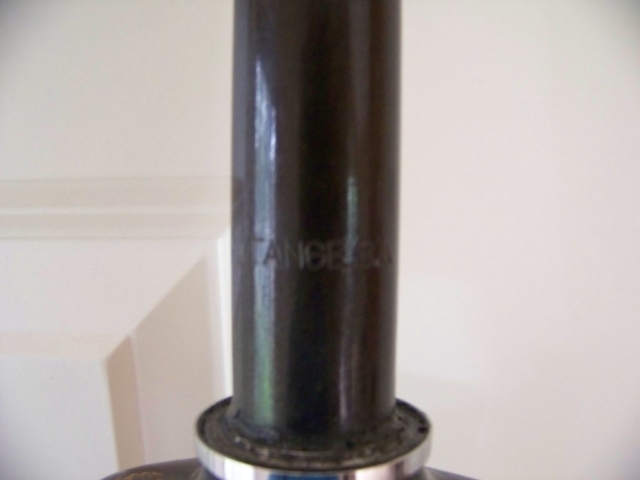
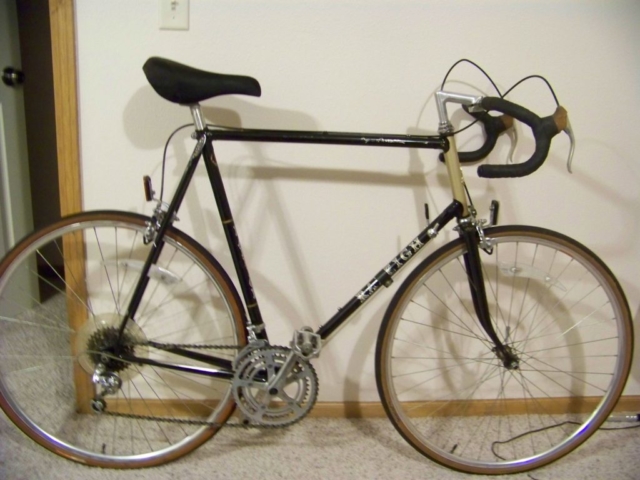
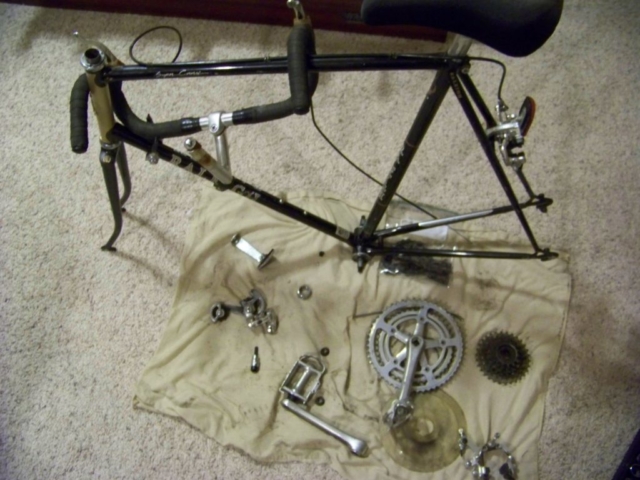
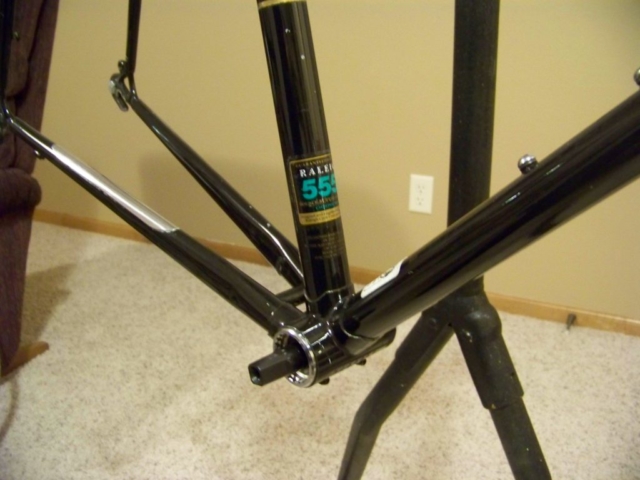
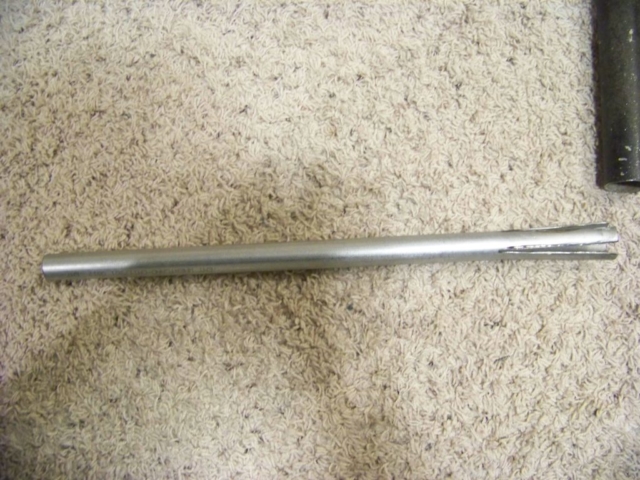
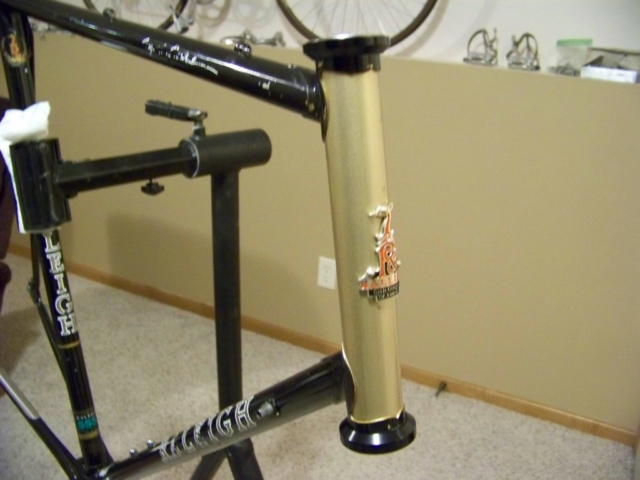
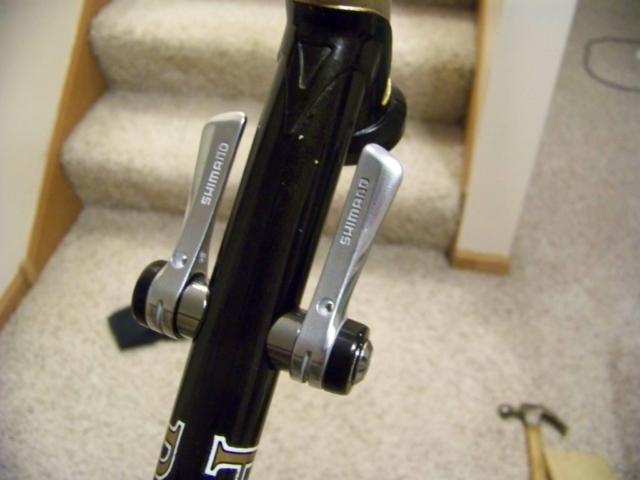
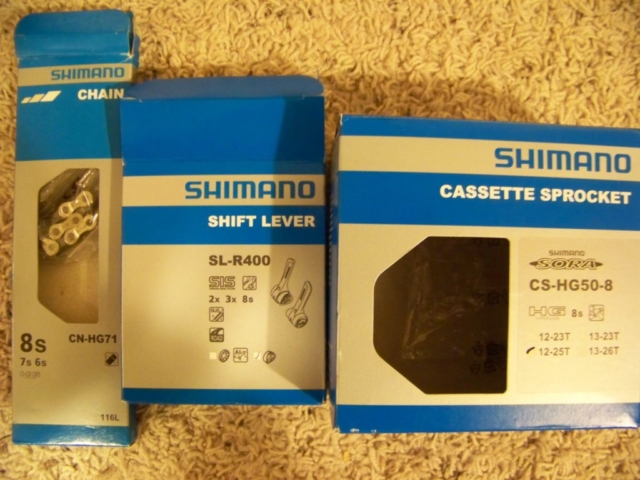
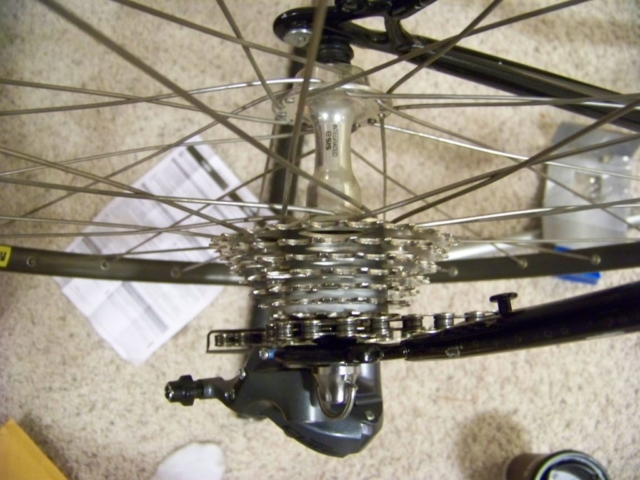
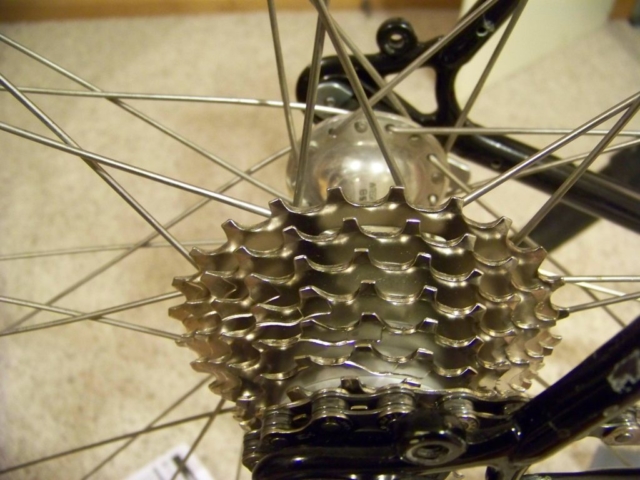
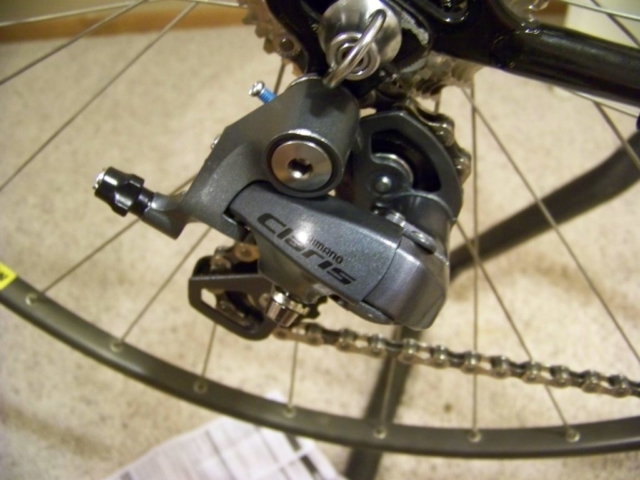
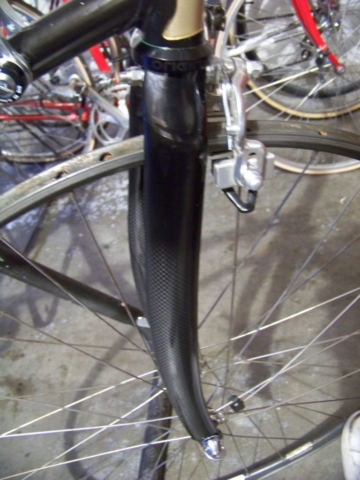
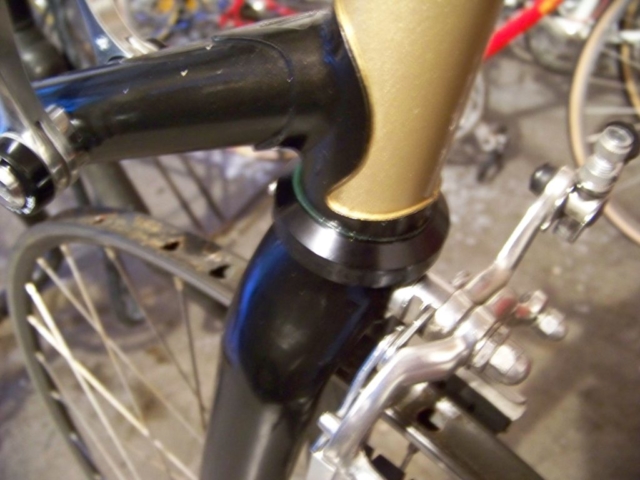
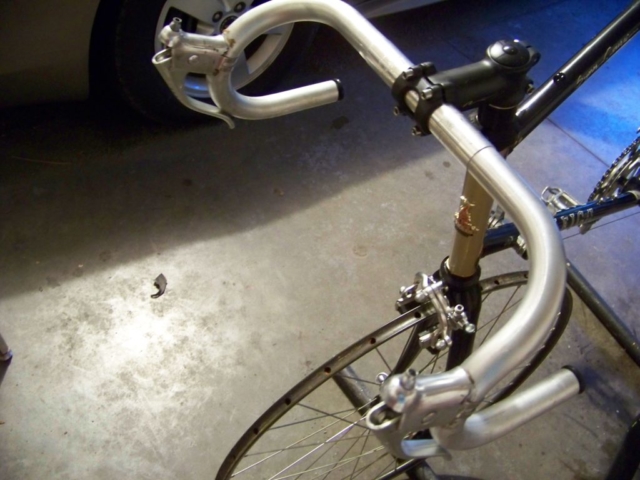
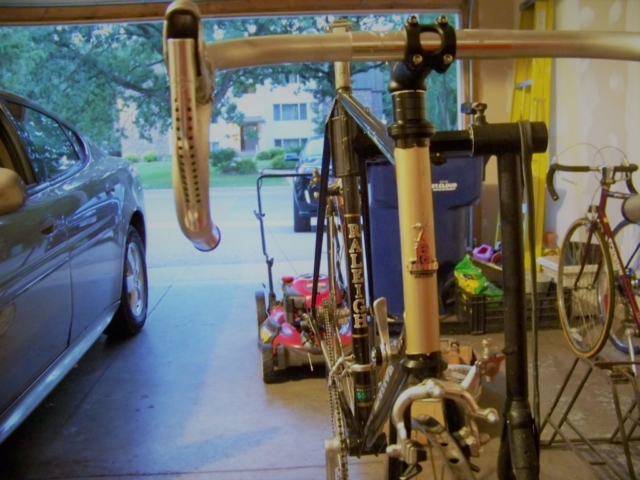
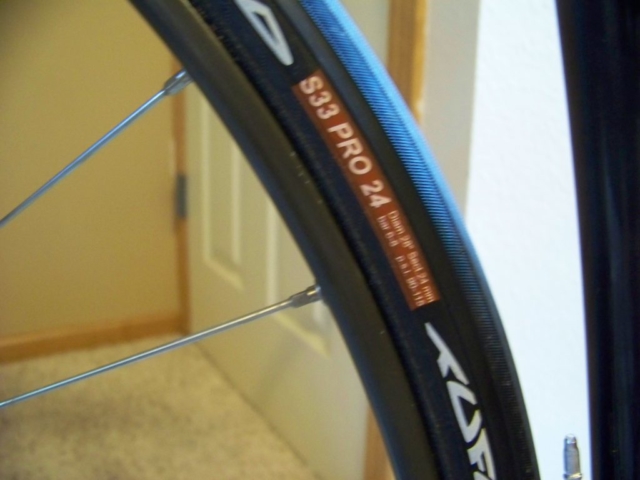
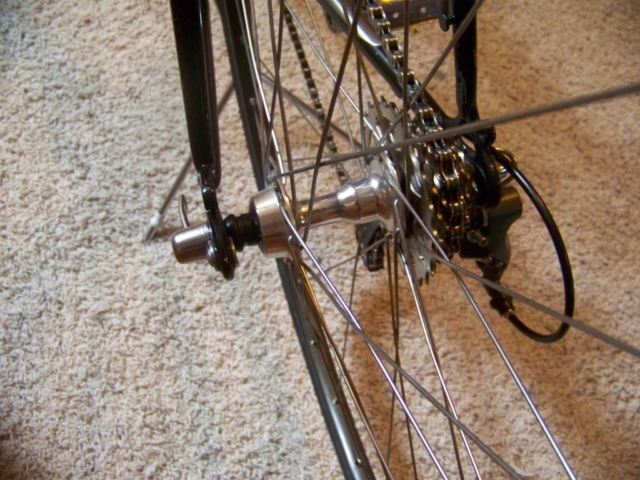
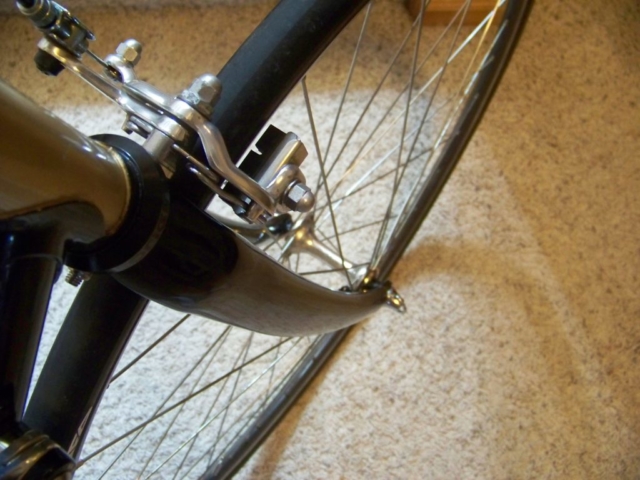
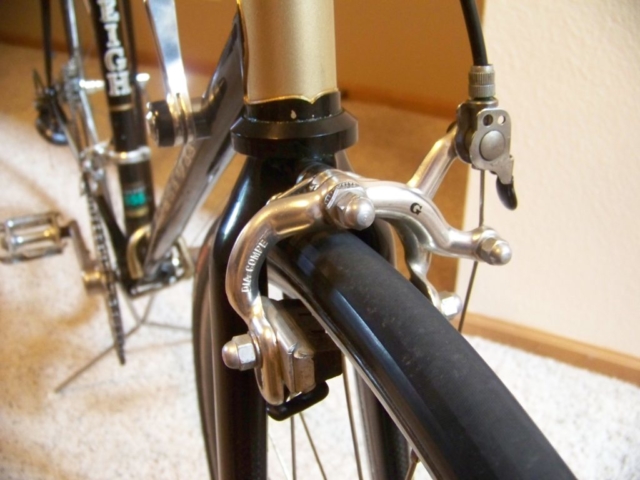
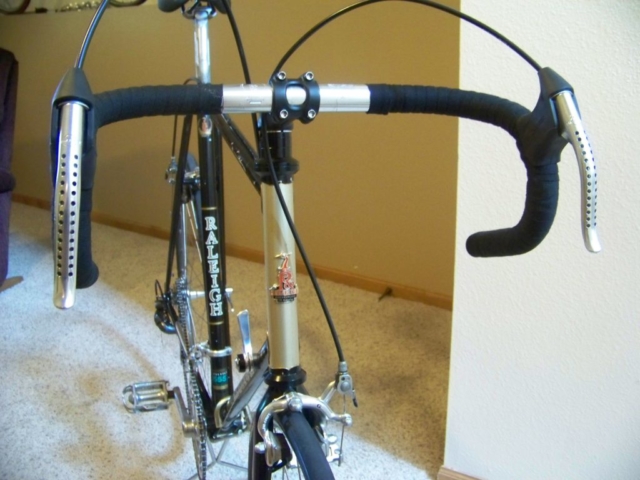
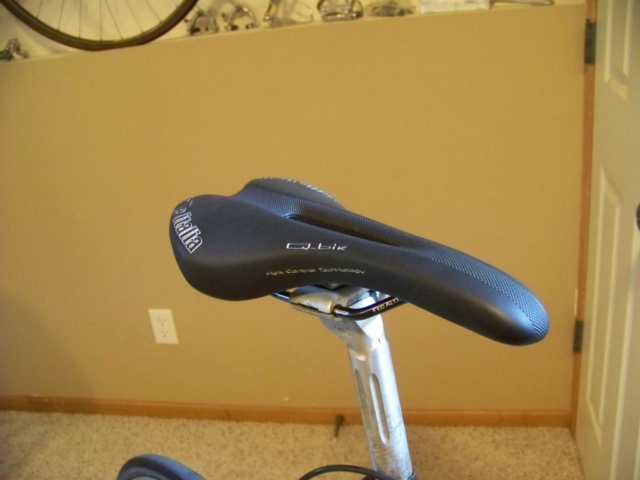
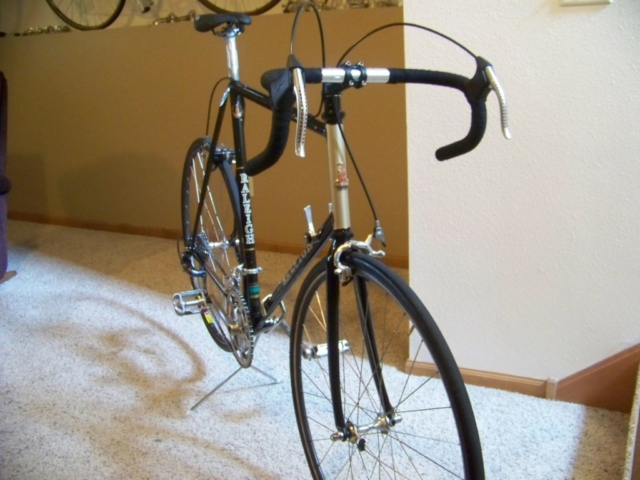
Very interested to see how this build goes, one actually popped up near me and i’m currently interested in getting it and converting it to a singlespeed to cut down on weight further still, very interested to find out how light you ended up getting even with the added gearing etc 🙂
That’s cool! I think that would be interesting as well. I also think that this frame would be perfect for your build. For one it isn’t highly collectible so you should be able to get a good price. And 2, it’s a decent lightweight steel frame. I’m guessing you probably could shed a few more pounds off than mine if not more. You’d be losing the weight of the freewheel/cassette, the front/back derailleur, and maybe even one brake caliper and one brake lever if you go that route. Another thing, my frame is large, so if you’re getting a smaller frame that’s going to minus some weight there as well. If you end up doing it, I’d be interested in hearing your results.
I’m hoping to get this project done soon. I’ve been waiting for the carbon fork from nashbar that’s been on back order for months. They said end of July they would have it shipped.
I too have a very similar bike , a 1982 Raleigh RR100 . It was given to me in poor condition by the elderly owner who neglected it but luckily kept it in his kitchen ! Thus protecting it from the elements . I have restored it to concourse condition and ride it almost every week . I also have a 1951 Robin Hood I bought in a junk shop for £45.00 and restored it and use it every week . I own eight bikes ranging from 80 years old to 6 month old modern disc brake road bike . I like riding the light weight bikes with STi shifters , but my old steel bikes are my pride and joy .
That’s cool to hear Dennis! I had an old Robin Hood that I recently sold. It was solid and in good shape. It was a pretty cool bike….gotta love them 3 speeds 🙂
Did you ever update the brake calipers? I am thinking of the Tektro dual-pivot brakes for mine.
I ended up ordering a medium reach Tektro dual pivot but they will not work. 1) they are to short and don’t reach the rim surface. However YOUR wheels are 27inch then they will. 2) They are recessed bolted. Therefore, a person would have to drill the hole bigger in the rear bridge and the front fork. My front fork is carbon, and is made for older bikes. I don’t want to drill through Carbon.
Not is all lost though. Google updating older bicycle with recessed bolted brake calipers. There’s videos and write ups on the subject. I think my best and only option would be to order 2 front brake calipers with longer reach.
hope that makes sense
My shop is ordering the long-reach tektros. I am on 27″ rims, but this way I should be able to move to 700c when these Arayas kick the bucket. Also, the Tektro 539 come in the nutted variety, so no drilling required.
Did you ever consider moving to a carbon seat post? Weight loss aside, I wonder how that would affect the ride.
You know, I haven’t. I wonder if they even make carbon seat post for that size seat tube. It looks like my seat post weighs 250 grams. Might be something worth looking into. Let me know how those Tektro 539’s work for you.
Hey, been loving the Tektro calipers. Their brake levers are well worth the upgrade too. Did end up getting some Mavic 700c wheels as well, the Tektro 539 reach those just fine.
Bike has taken a beating but is still riding well. Sometimes I think about going fully modernized with the shifting but you can’t beat the classic looks.
https://imgur.com/a/wtPLbxp